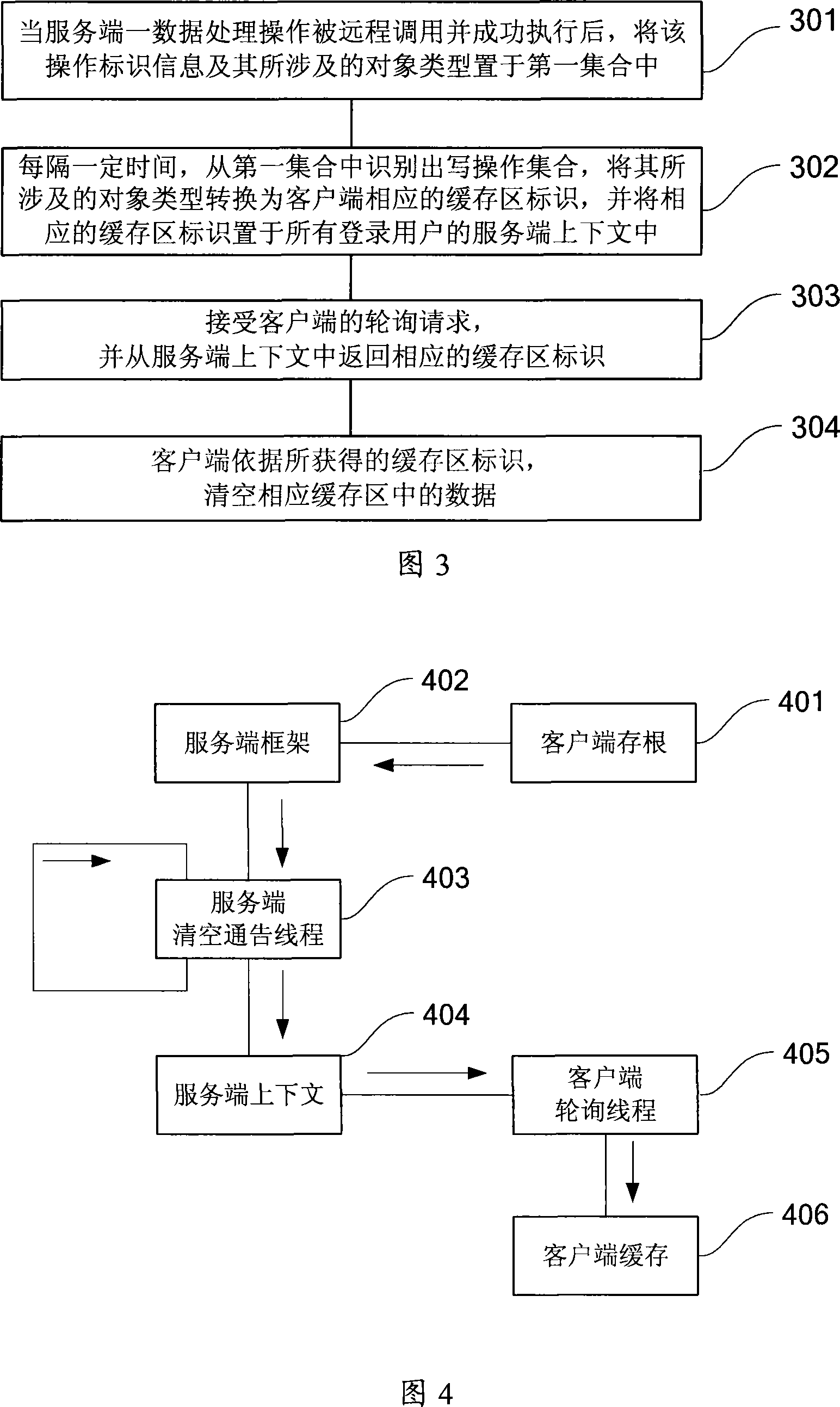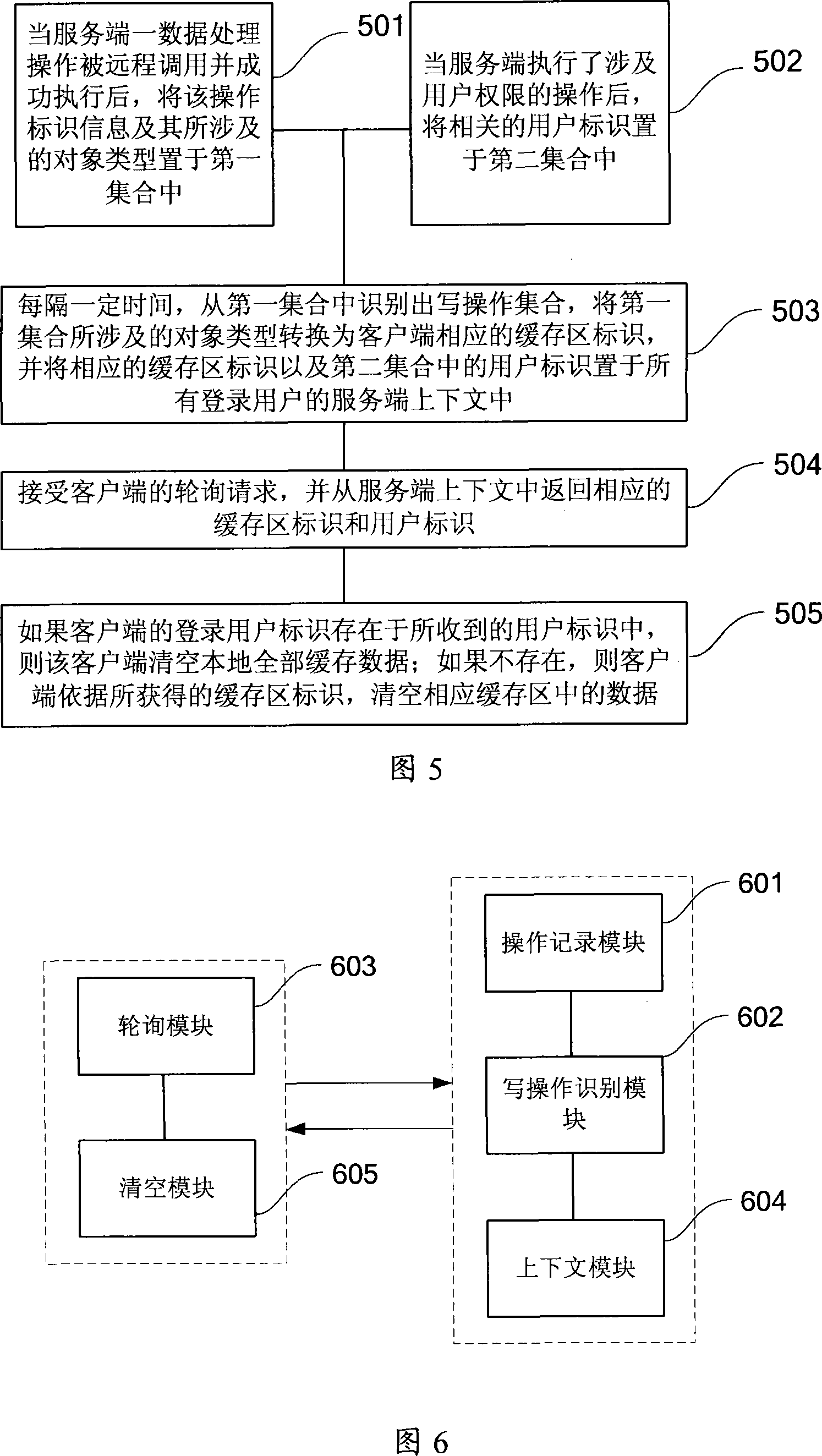A client buffer update method and device in distributed system
A distributed system and client-side technology, applied in the field of information transmission in distributed systems, can solve problems such as efficiency defects, inability to ensure timely update of cached data, inability to know update cache, etc., to achieve the effect of ensuring data consistency
- Summary
- Abstract
- Description
- Claims
- Application Information
AI Technical Summary
Problems solved by technology
Method used
Image
Examples
Embodiment 1
[0060] Referring to FIG. 1 , it shows Embodiment 1 of a method for updating client cache data in a distributed system according to the present invention, which may include the following steps:
[0061] Step 101. After a data processing operation at the server end is remotely invoked and successfully executed, put the operation identification information and the object type involved in the first set.
[0062] In the following detailed description, the word "method" will be directly used instead of "operation" for description. The operation identification information in step 101 may generally be a method name or serial number, and the like. Step 101 can be aimed at the successful execution of any interface method of the server.
[0063] Step 102, at regular intervals, identify the write operation set from the first set, and place the object types involved in it in the server context of all logged-in users; there are many ways to identify write operations, simple and convenient ...
Embodiment 2
[0075] Referring to FIG. 2 , it shows Embodiment 2 of a method for updating client cache data in a distributed system, which may include the following steps:
[0076] Step 201, when a data processing operation at the server end is remotely invoked and successfully executed, put the operation identification information and the object type involved in the first set;
[0077] Step 202, after the server executes an operation related to user rights, put the relevant user IDs in the second set;
[0078] Obviously, there is no necessary sequence between steps 201 and 202 .
[0079] Step 203, at regular intervals, identify the write operation set from the first set, and place the object types involved in the first set and the user identifiers in the second set in the server context of all logged-in users;
[0080] Step 204, accept the polling request from the client, and return the corresponding object type and user ID from the server context;
[0081] Step 205, if the client's logi...
Embodiment 3
[0094] Referring to FIG. 3 , a method embodiment 3 for updating client cache data in a distributed system is shown, including the following steps:
[0095] Step 301, when a data processing operation at the server end is remotely invoked and successfully executed, put the operation identification information and the object type involved in the first set;
[0096] Step 302, at regular intervals, identify the write operation set from the first set, convert the object type involved into the corresponding cache ID of the client, and place the corresponding cache ID in the service of all logged-in users In the context of the client; the cached data of the client is partitioned and managed according to the object type:
[0097] Step 303, accepting the polling request from the client, and returning the corresponding buffer identifier from the server context;
[0098] Step 304, the client clears the data in the corresponding cache according to the obtained cache identifier.
[0099] ...
PUM
 Login to View More
Login to View More Abstract
Description
Claims
Application Information
 Login to View More
Login to View More - R&D
- Intellectual Property
- Life Sciences
- Materials
- Tech Scout
- Unparalleled Data Quality
- Higher Quality Content
- 60% Fewer Hallucinations
Browse by: Latest US Patents, China's latest patents, Technical Efficacy Thesaurus, Application Domain, Technology Topic, Popular Technical Reports.
© 2025 PatSnap. All rights reserved.Legal|Privacy policy|Modern Slavery Act Transparency Statement|Sitemap|About US| Contact US: help@patsnap.com



